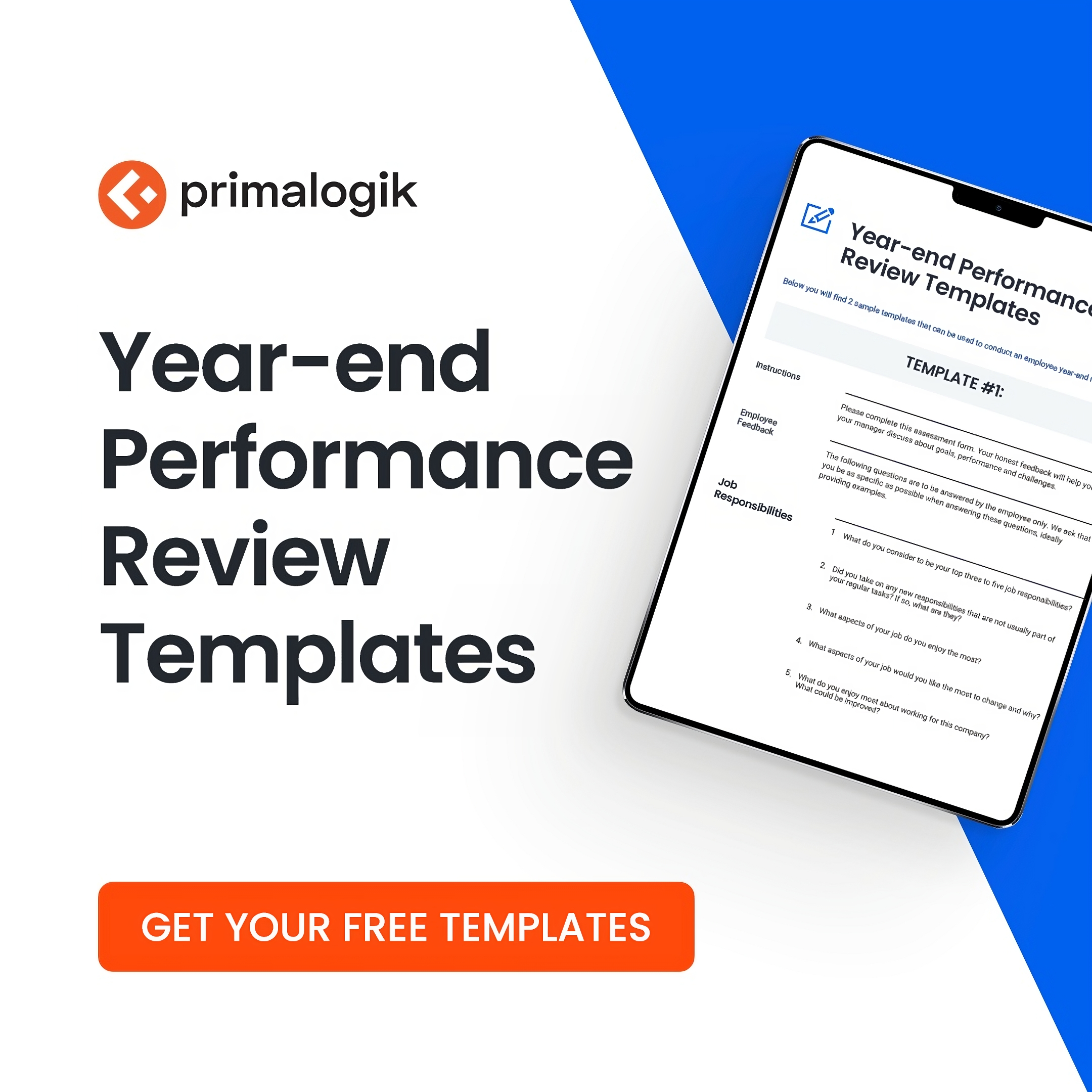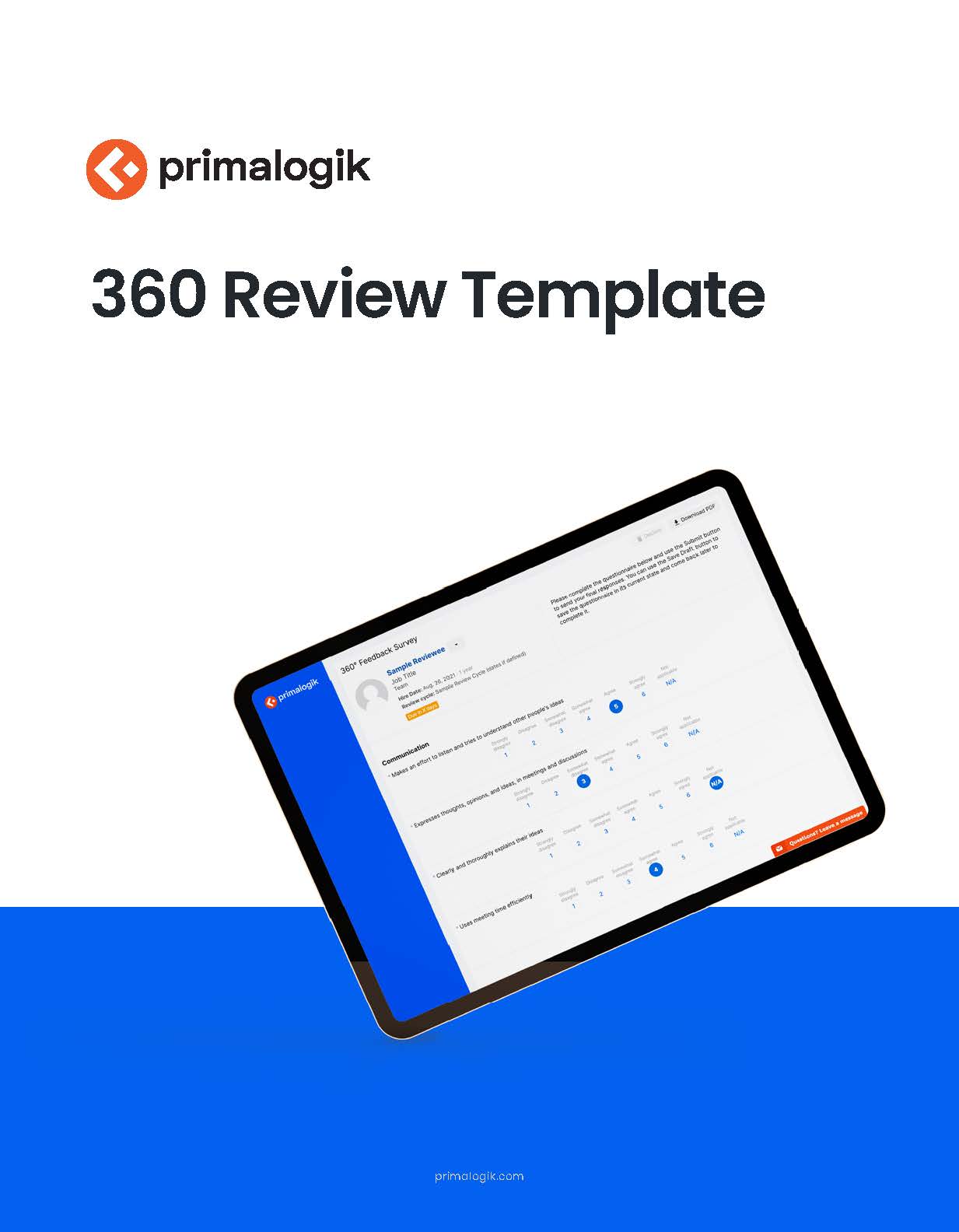Performance reviews are an important part of the performance management process. When done well, they can enhance engagement and facilitate growth. But how they are done must adapt to changing needs and emerging insights. Today, only 14% of employees feel they benefit from their performance evaluations—and the other 86% are just trying to get through them. Worse, the process can actually be harmful to performance and relationships between supervisors and direct reports when not managed wisely.
In this article, we’ll share advice on how to adjust your performance review process in response to common challenges. By doing so, you’ll achieve more accurate—and beneficial—evaluations and guidance for each employee.
Table of Contents
2. Understanding Employee Perspectives
3. Exploring Alternatives and Solutions
4. Cultivating a Culture of Feedback and Development
5. Empowering Managers and Employees
6. Leveraging Data and Insights
Identifying Key Challenges
The shortcomings of traditional performance reviews include their tendency toward bias and subjectivity. Let’s unpack what this means here.
Many forms of bias can affect reviewers. It can be hard to move beyond outdated assumptions of an employee’s performance, for instance. If a manager has given an employee low ratings in the past, she might be predisposed to assign him low ratings in the future.
Similarly, the “halo” effect can cause a manager to view an employee as excelling in every area because she excels in one key area. Likewise, the “thorns” effect can cause a manager to dismiss an employee as a poor performer due to difficulty in one important area.
Managers may also be biased toward employees who work in an office with them, assigning lower ratings to remote workers. Whatever the cause, allowing bias to persist in performance appraisals causes employee morale and engagement to suffer.
Understanding Employee Perspectives

Employees often approach the performance review process feeling anxious. Worse, they may perceive their boss as underprepared or biased against them (often with good reason!). If they’ve received poor ratings in the past, they might fear their boss will never see them in a positive light.
A poor or unfair review leaves employees feeling defensive, resentful, or unappreciated. But even for those who receive above average ratings, performance appraisals can be stress-inducing. Employees fear the review will be overly harsh or critical. After all, the traditional review is more a monologue than a conversation, and employees often have no opportunity to share their perspectives, needs, or reasons for any performance shortcomings.
Exploring Alternatives and Solutions
By building trust and motivating growth, sharing quality input with employees creates a positive feedback loop. Strong relationships evolve between managers and direct reports as performance reviews become more effective. Let’s review a few innovative approaches to performance management that make all of this possible.
- Continuous feedback. This should be the cornerstone of every performance management process. Couple bite-sized daily feedback with weekly one-on-ones and periodic reviews, as we’ll discuss next.
- Agile performance appraisals, which rely on consistent coaching. Managers might deliver longer reviews on an as-needed basis, such as after a big project wraps up. Or, they might conduct lengthier performance conversations on a monthly or bimonthly basis, with less formality than traditional reviews. “Today’s agile manager is no longer a commander and detail-checker but a strong coach,” writes Eric Mosley in Forbes. “When employees participate in a two-way conversation, they gain ownership and accountability. They also become invested in a process that helps them decide their own career paths, even as their life goals change.”
- Quarterly performance reviews. For many organizations, quarterly reviews provide the right balance of formal assessment and timely conversations. Combined with continuous feedback, they equip managers to share relevant input that spans a time frame they can easily reflect back upon.
Today, software platforms streamline the performance evaluation process. Quality performance review tools can track and summarize the feedback given during light check-ins, helping managers organize their thoughts. Plus, it can glean data from goal-tracking software to highlight key strengths and challenges to address. Use technology-enabled solutions to your advantage, guiding managers in conducting their best performance reviews yet.
Cultivating a Culture of Feedback and Development

Let’s explore how to foster a feedback-rich environment that encourages open communication and growth.
Let Employees Drive the Discussion
Allow employees to lead the discussion, says leadership consultant Mark Nevins in Forbes. After all, they’re the ones who stand to benefit most directly. Encourage them to take the reins by sending prompts in advance. Nevins recommends prompts like:
- What has been going well for you?
- What hasn’t gone as well as you hoped?
- What are your most important goals for the next review period?
- How can I help you achieve them?
As the employee answers each question, the manager can share additional perspectives, ask follow-up questions, and make observations.
Use Clear, Descriptive Language
Use descriptive phrases that catalyze change. In Power Phrases for Performance Reviews, Amanda Symonds shares some examples:
- “You frequently catch things that others miss. Your attention to detail improves the quality of the team’s output.”
- “You strive to present a well-reasoned rationale for your ideas.”
- “You try to see both sides of any issue. This sensitivity makes others feel heard and valued.”
As shown here, don’t focus solely on work output; also comment on interpersonal dynamics and communication. These factors strongly affect what teams can accomplish together.
To provide specific examples of behaviours, refer to the Situation-Behavior-Impact (SBI) model for sharing feedback, from the Center for Creative Leadership. In this model, you first present a situation that occurred. Next, you describe the behaviour you observed from the employee. Then, you specify the impact of this behaviour. (Importantly, don’t psychoanalyze its motives.) Clarifying all three components highlights exactly what happened and how it affected the team.
Leverage Objective Data
Reflect on data from performance management software, using it to help shape the review. By doing so, you’ll avoid letting bias guide the performance evaluation. If your personal impressions of the employee’s performance don’t match the data, reevaluate them.
Deliver Constructive Feedback Tactfully
During a performance review, constructive feedback shouldn’t come as a shock. Ideally, you’ve clearly addressed any issues as soon as they arose. Still, use these strategies to share constructive feedback tactfully:
- Be empathetic. Emphasize that everyone has experienced struggles, including you.
- Comment on the quality of work, not the person’s character. Feedback should never involve personal judgments.
- Give the employee space to describe challenges that affected her performance. Genuinely listen, striving to understand her perspectives.
- Highlight positive qualities that can help the employee surmount these hurdles.
Then, focus on how to bring about change, as we’ll discuss next.
Focus on Solutions
Make the focus of your conversation potential solutions, rather than problems. Describe what a more effective performance in certain areas looks like. Describe specific actions the employee can take when engaged in a particular role, task, or project.
Then discuss steps to help employees make these improvements. Together, begin to make a plan for change, outlining the support you’ll provide along the way.
Empowering Managers and Employees
Train managers to conduct effective performance discussions and plans for employee development. Consider providing a quarterly refresher workshop that shares emerging insights and best practices. At the same time, empower employees to take ownership of their growth through practices like self-assessment and goal-setting. Managers should collaboratively work with them to design plans for personal growth, rather than imposing goals on them.
Cultivating a coaching mindset among managers will shift the culture of the organization in a positive direction, as Paul Falcone says in Leadership Offense. It emphasizes trust and belief in each person’s ability to change, drawing on emotional intelligence. In your 360 reviews for managers, focus strongly on these qualities, sharing guidance on how they can strengthen these areas.
Likewise, empower employees to recover from a less-than-glowing review with the right tools and strategies:
- Seeking feedback from peers on their performance. Additional perspectives can provide clarity and help employees determine whether their manager’s input is on-track or off-base.
- Preparing follow-up questions to ask their manager during one-on-ones, to gauge progress.
- Using goal-tracking software to assess their own progress on a daily basis.
These tools and tactics will boost motivation and engagement, helping employees to flourish. Consistent, supportive feedback from their manager will guide their efforts.
Leveraging Data and Insights
Use analytics and performance metrics to gain actionable insights into employee progress and engagement. By leveraging technology, you can easily track growth and identify trends, allowing you to make data-driven decisions. Such tools can track individual and team KPIs, assessing progress toward big-picture goals.
By following the strategies outlined here, you’ll mitigate bias in your performance reviews. Moreover, you’ll increase their effectiveness and forge stronger relationships between managers and direct reports. By rethinking your approach to performance management and embracing innovative solutions, you’ll drive employee engagement and development.
See firsthand how software can enhance your performance review process—demo our product.





